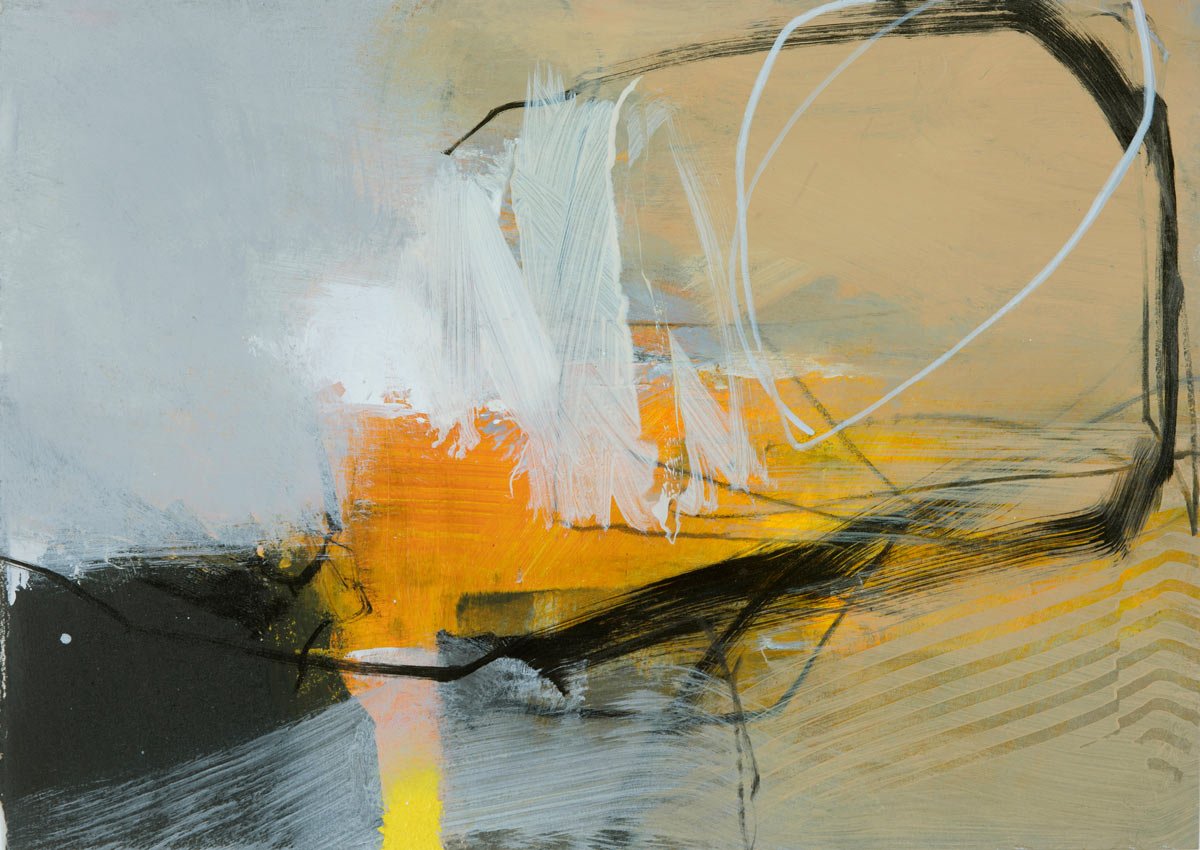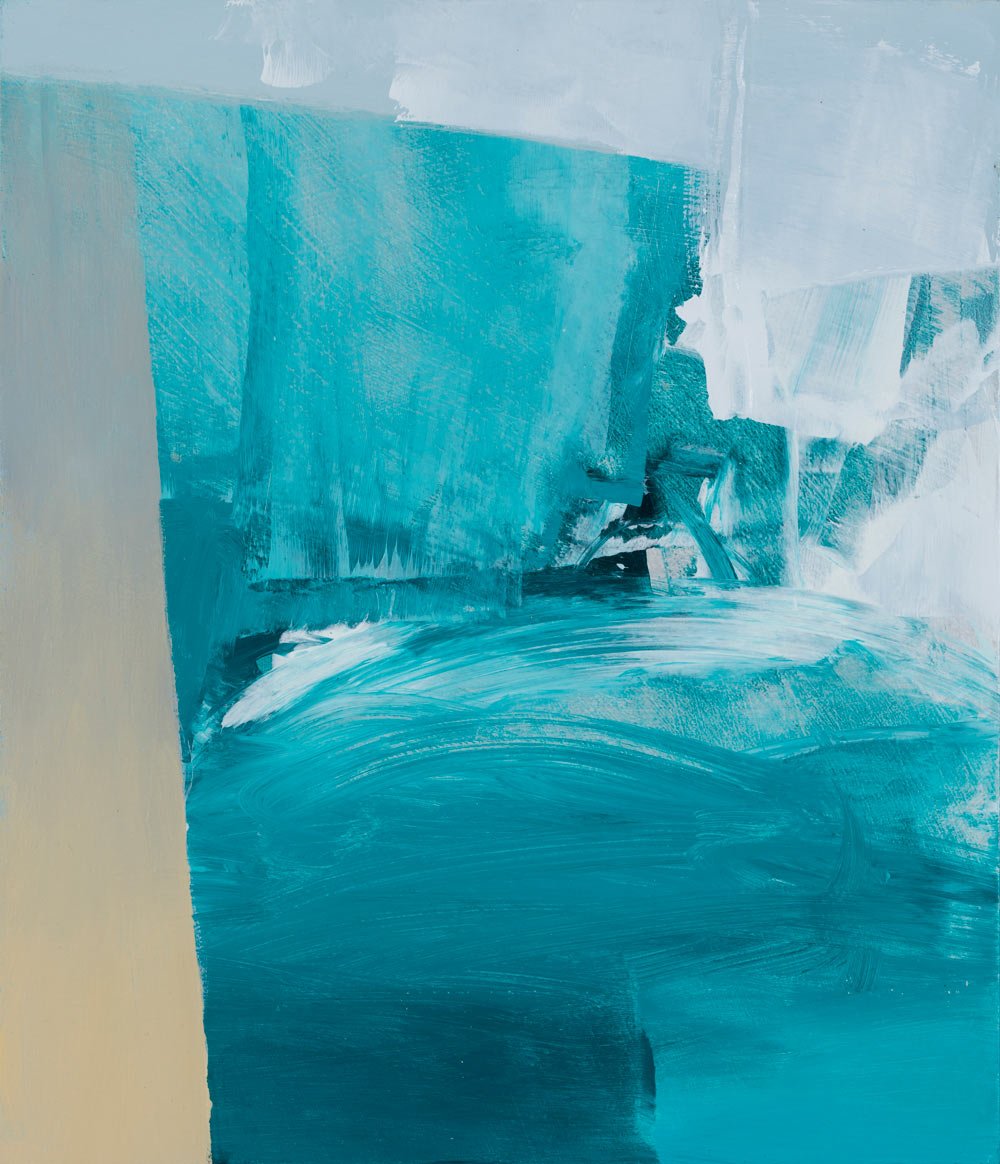Neil Canning
Finding Freedom
Catalogue Foreword
Neil Canning is an artist removing boundaries. Encouraging flow and spontaneity within his work, he experiments on the canvas: pushing the paint to its limits. Recently he has explored different colour palettes and forms, reducing more ‘obvious’ indicators of landscape such as the horizon line and giving himself over to abstraction. This abandon has resulted in frenetic, bold pieces tempered with a strength and silence. Neil has captured the Cornish landscape’s unique balance between peace and power.
Neil continues the tradition of the St Ives Modernists. His inclusion in the 2007 exhibition Art Now Cornwall at the Tate St Ives, marshalled him in the next generation of the St Ives School. When Neil arrived in St Ives in the 1990s, he had already established his artistic language, but the inspiration of West Penwith accelerated his practice. He was working amongst artists like Patrick Heron and was close friends with Sandra Blow, all linked by their powerful response to the landscape around them. Although Neil’s work references other Modern British inspirations artists such as Gerhard Richter and Richard Diebenkorn, the freedom he has found with his practice to access different sight-lines and levels of abstraction is reminiscent of the roving views of Peter Lanyon, the bold forms of Sandra Blow.
Rather than wanting to paint the specifics of landscape, he emulates its sensation: the movement and dynamics of wind, swell, rain and fractured sunlight. It’s the state of flux which arrests Neil. He revisits locations like Zennor and Prussia Cove, responding with a fresh eye each time. Information takes time to filter through his mind, the memory editing the place and distilling an atmosphere. Moving through a well-known space, a new collection of things will present themselves: a granite bolder, a newly budded clutch of gorse, a colour embedded in a cliff face. Rather than transcribing a specific view, his eye roams, taking in different viewpoints. The small details are considered as much as the grand view: a blackthorn branch given as much visual importance as a line of headland.
These observations percolate as Neil enters the studio. Beginning with 40 to 50 works on paper, he allows himself total freedom, refusing to reproduce a location from a specific viewpoint and instead letting elements arrive naturally. He responds to his material, enjoying organic decisions. The paint is layered and then pulled back, excavating elements of previous compositions, creating new dynamics between line, form and colour. As one piece is finished, it suggests another: a specific colour or form cross pollinating onto other works on paper. This period of experimentation establishes a direction, which Neil takes onwards in his canvases. He will take a starting point: a colour combination or a certain shape and push them forward, allowing the paint to dictate what happens next. As he layers and uncovers, the specifics of place begin to emerge: the original memory accelerating and motivating his decisions with the paint.
With this approach, Neil is carrying the torch of Cornish abstract expressionism onwards. His canvases are perfectly balanced: the colours displaying the mood and vibrancy of the land, the mark-making the boldness and flux of the atmosphere. He expertly conveys Cornwall’s bouncing light, capricious weather fronts and ocean thrum. This exhibition, Finding Freedom at Gallery East, is a masterclass in composition and emotion.
For more information: https://neilcanning.com/work/finding-freedom/
‘Canning will take a starting point: a colour combination or a certain shape and push them forward, allowing the paint to dictate what happens next. As he layers and uncovers, the specifics of place begin to emerge: the original memory accelerating and motivating his decisions with the paint.’








